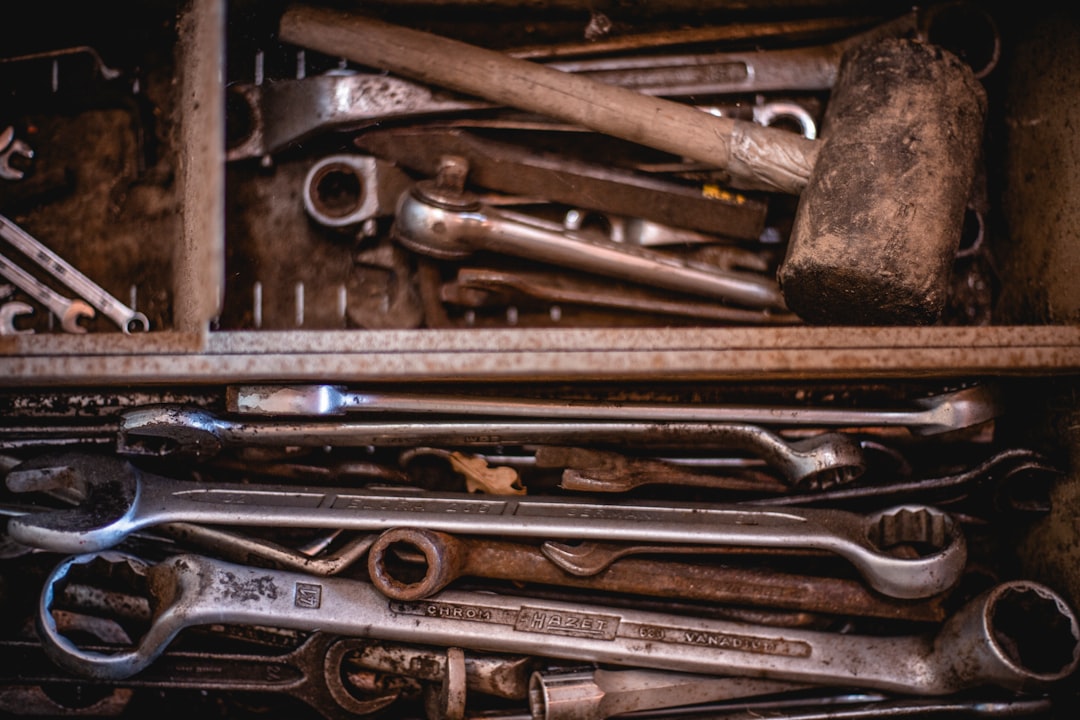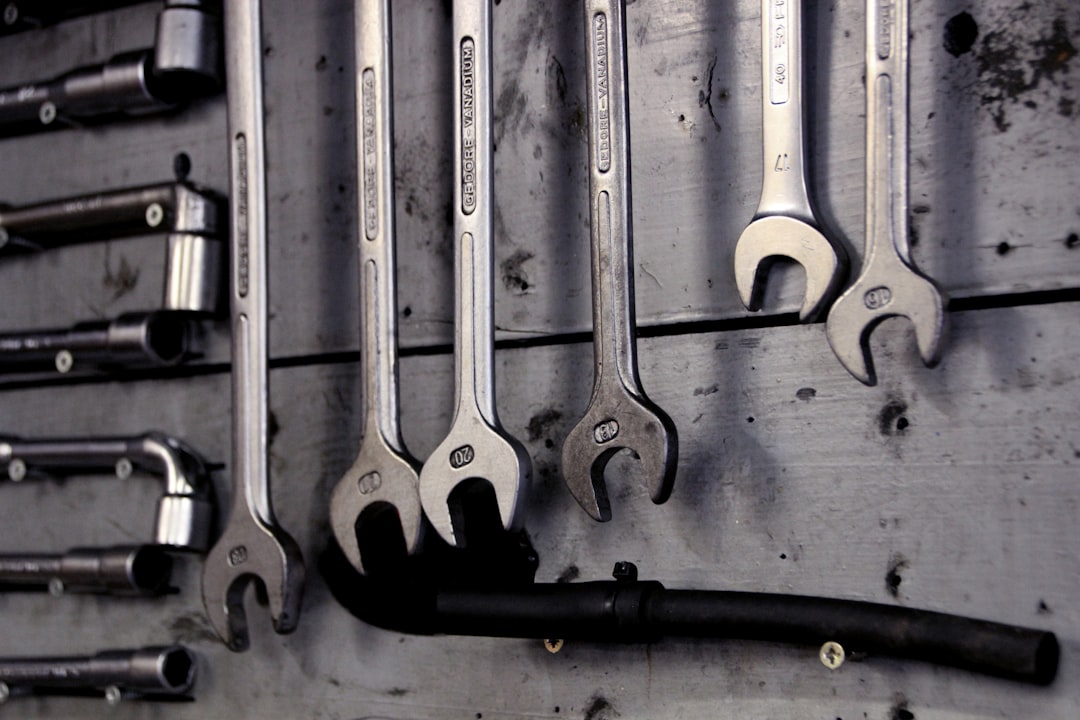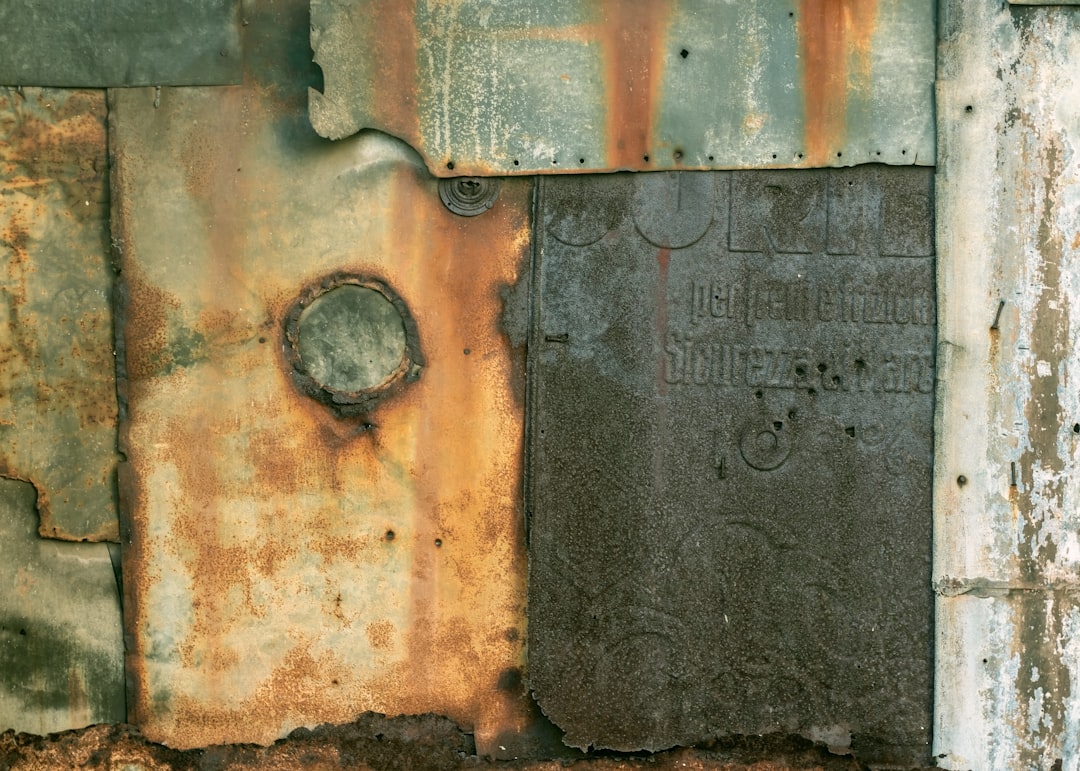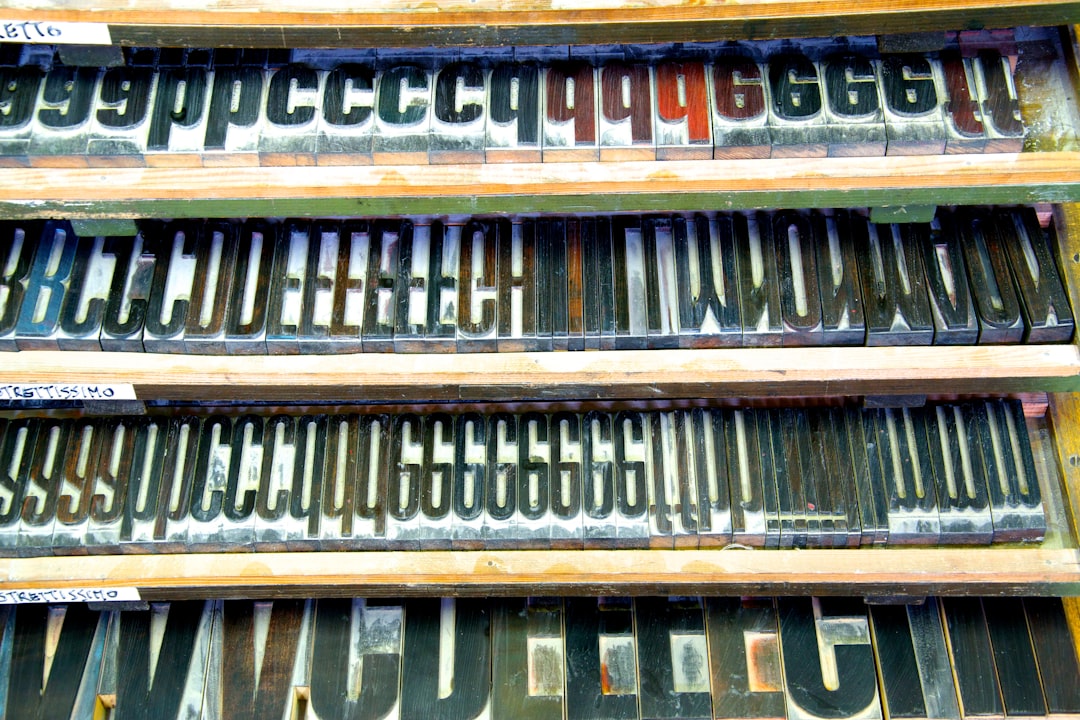

Engage prospects with a scan and streamline customer engagement with FREE QR code marketing tools by Sona – no strings attached!
Create a Free QR CodeFree consultation

No commitment

Engage prospects with a scan and streamline customer engagement with FREE QR code marketing tools by Sona – no strings attached!
Create a Free QR CodeFree consultation

No commitment
It looks like you haven’t provided the article content yet. Please paste the article section you’d like me to review, and I’ll proceed with the requested revisions.
QR codes have revolutionized the metal cleaning services industry by transforming traditional client interactions into seamless, data-driven experiences. From streamlining service access and scheduling to providing instant access to maintenance records and safety protocols, QR codes enhance customer acquisition and retention while boosting operational efficiency. Imagine your clients effortlessly scanning a code to unlock detailed service histories or exclusive offers—creating trust and convenience that set your business apart.
With Sona QR, you can easily generate dynamic, trackable QR codes that adapt as your campaigns evolve, eliminating the need for costly reprints. Every scan delivers actionable insights, linking customer engagement directly to revenue growth and enabling you to optimize your service delivery in real time. Start for free with Sona QR today and turn every scan into a powerful connection that drives your metal cleaning services business forward.
Best practices for cleaning metal surfaces include using appropriate cleaning agents that do not cause corrosion, gently removing dirt and grime, and regularly inspecting the surfaces to prevent damage.
Maintaining the longevity of metal equipment involves regular cleaning, applying protective coatings, avoiding exposure to harsh chemicals, and performing routine maintenance checks.
Environmental considerations include using eco-friendly cleaning products, properly disposing of waste materials, and minimizing water and chemical usage during the cleaning process.
Different types of metal cleaning services include mechanical cleaning, chemical cleaning, abrasive blasting, and ultrasonic cleaning, each suited for specific metal types and cleaning needs.
Choosing a reliable metal cleaning service provider involves checking their experience, certifications, customer reviews, range of services offered, and adherence to environmental regulations.

QR codes are transforming how businesses in metal cleaning services connect offline materials and touchpoints directly with digital workflows. For teams focused on industrial metal cleaning, metal surface restoration, and eco-friendly cleaning solutions, QR codes provide an efficient, modern way to boost customer engagement, capture demand, and drive conversions without the need for an app download or complicated onboarding. By embedding scannable access points everywhere work happens, providers can shorten the path from interest to action, reduce delays, and eliminate the manual steps that often cause prospects to drop off. For a broader primer, see QR codes in marketing.
Traditional printed brochures, paper-based inquiry forms, and static signage in shop floors and industrial settings often create friction, resulting in missed high-value prospects and incomplete data. QR codes eliminate these barriers, turning every physical asset, from equipment to safety sheets, into a digital entry point. This shift allows metal cleaning service providers to reduce lost leads and surface high-intent opportunities while tracking every interaction for ongoing optimization across marketing, sales, and operations.
Integrating QR code strategies throughout operations gives providers visibility into previously anonymous traffic, closing the gap between offline interest and digital follow-up. This enables measurement of marketing ROI, streamlined workflows, and stronger regulatory compliance, three critical factors for sustainable growth in today’s commercial cleaning market. The methods in this guide help metal cleaning services deploy QR codes to enable seamless access, measurable engagement, and real business impact while unifying teams around common, trackable goals.

QR codes bridge the gap between physical touchpoints and digital outcomes, solving the major challenge of missed opportunities when prospects engage with signage or print but never enter your sales funnel. Many purchasing managers, facility engineers, and EHS leaders interact with your brand on shop floors, in parking lots, or at trade shows, then fail to complete traditional paper forms or make a call. When that interest goes untracked, otherwise qualified buyers remain invisible.
The path to smarter acquisition starts by replacing analog friction with mobile-first, scannable journeys. Printed estimate forms, static shop signs, or manual sign-in logs can be replaced with QR-powered experiences that capture data in real time. Each scan becomes an intent signal: who engaged, where they were, and what they wanted to do. The more you align QR placements with the specific moments buyers seek information or assistance, the higher your scan-to-lead conversion rates and the faster your follow-up.
Together, these moves help metal cleaning services improve both lead quality and follow-up. QR codes serve as the gateway to a cleaner, faster customer journey and as a tool for ongoing optimization across campaigns, placements, and teams.

Metal cleaning providers often struggle to connect offline interactions, such as site visits, trade shows, safety walk-throughs, or printed signage, with digital marketing and sales systems. The result is a fragmented view of demand where valuable engagement signals never reach your CRM, and prospects remain unknown until they explicitly reach out.
QR codes change this dynamic by making each physical surface a potential entry point into your digital funnel, and even simple QR codes can streamline processes in field environments. From compliance signage to equipment decals to mailers, a scan can instantly route a buyer to a relevant action. Dynamic QR codes also allow you to update destinations after printing, which keeps materials current and eliminates reprint waste. The net effect is higher responsiveness, better attribution, and reduced cost per acquisition.
In a sector where trust, safety, and precision drive buying decisions, QR codes make it easy to deliver the right information at the right time while giving you the analytics needed to improve performance and accountability.
Different QR formats support different workflows, and metal cleaning services can benefit from a mix of permanent resources and campaign-specific links. Think of each format as a building block in your broader system, used where it fits best and tracked individually for clear attribution.
Dynamic QR codes deserve special attention in this vertical. Regulations change, SDS files are refreshed, and process documentation evolves. With dynamic QR destinations, you update content centrally without pulling labels or reprinting vehicle graphics. Static codes still have a place for fixed resources, such as long-lived demo videos or evergreen URLs.
Each format should feed back into your CRM or marketing tools so that no scan is wasted. Sona QR supports all of these QR types and centralizes management, making it easy to run tests, swap destinations, and maintain clean attribution across assets.

Growth comes from placing QR codes where high-intent buyers already look for answers, confirmations, or next steps. In metal cleaning services, that means operational environments like shop floors and yards, logistics areas, and quality control stations. It also includes rolling assets such as service vehicles that pass through industrial parks, as well as conference materials used in niche trade events.
Start with placements that see frequent repeat traffic, then expand to assets that travel wide. For every placement, design the message around a single, concrete next step. The clearer the call to action and the more immediate the payoff, the higher your scan rate.
Strategic placement reveals who is engaging, where they are in the journey, and how to respond. Over time, you will discover that a handful of high-performing placements drive the majority of pipeline while informing smarter creative and targeting.

QR codes shine when they are embedded in specific workflows with clearly defined outcomes. In metal cleaning services, three use cases repeatedly deliver results: revenue capture, compliance enablement, and customer experience improvements. Each turns a friction-heavy moment into a one-tap action that you can attribute and optimize.
Pair each use case with a destination page that is tightly aligned to the scanner’s intent. If the code promises a 24-hour quote, land them on a form with three to five fields and a clear time commitment. If the code offers SDS access, take them to a filtered library rather than a generic homepage. Alignment between promise and landing experience is the easiest way to lift conversion rates.
These use cases reduce wasted engagement by ensuring every scan produces an action you can track. Over time, your scan data becomes a forecast for demand, churn risk, and upsell opportunities.
Each QR scan carries context: where it happened, what was scanned, and which device was used. That context is your raw material for audience building. By deploying distinct QR codes at different funnel stages and locations, you can create high-precision segments that power email nurture, SMS follow-up, and paid retargeting with intent-driven retargeting.
Metal cleaning services can segment by job role and intent as well as by environment. For example, a safety manager scanning a compliance poster is at a different stage than a procurement lead scanning a pricing sheet. Build your audiences to reflect these realities and you will deliver relevant, timely messages that convert.
With Sona QR, tagging and routing happen automatically. You get structured data you can use for audience building without manual exports or guesswork, so retargeting reflects real behavior rather than assumptions.
QR codes act as connective tissue across print, field operations, events, and digital channels. In metal cleaning services, where much of the buyer’s evaluation occurs offline in industrial settings, QR codes make it easy to move from inspection to inquiry, and from compliance checks to scheduled service. They also solve the age-old attribution problem by tying scans to specific assets and placements.
To get the most out of QR codes, align them with the media your buyers already consume and the surfaces they already trust. Then design a simple, valuable step that is worth the scan. Use centralized tools like Sona QR to manage all codes, monitor performance, and feed your CRM and analytics stack.
QR codes serve as the offline onramp to your digital marketing engine. They also unlock a new layer of data collection across channels that were once difficult to measure. With a centralized platform like Sona QR, you can manage all your codes, monitor performance, and sync scan data with your CRM and ad platforms.
The fastest way to prove value is to run a focused pilot with a clear, measurable outcome. Use the following steps to plan, launch, and refine your campaign. Treat each placement as a hypothesis, then iterate based on scan and conversion data. Within a few weeks, you will know which locations, messages, and formats deserve full rollout.
Design for the reality of industrial environments. High-gloss finishes, uneven lighting, and long viewing distances affect scannability. Test thoroughly where the code will live, not just in a design studio. Clear contrast, quiet zones, and concise CTAs are simple choices that drive scan rates higher.
Start with a single, conversion-oriented goal that maps to a revenue or compliance outcome. For example, capture quote requests at on-site demos, collect post-service feedback from QC managers, or provide SDS access that logs account activity. The more specific the goal, the easier it is to design the right destination page and measure success.
Translate the use case into a short promise on the asset itself. Examples include Scan for a 24-hour quote, Scan for SDS and certifications, and Scan to verify service completion. Make the benefit immediate and relevant to the scanner’s role.
Select between static and dynamic QR codes based on how often the destination may change and whether you need granular analytics. Static codes work for permanent resources like evergreen videos or a fixed SDS library. Dynamic codes are ideal for campaigns, targets that will evolve, and any instance where tracking and A/B testing are essential.
For most acquisition and compliance use cases, choose dynamic codes routed through Sona QR. This gives you campaign-level analytics, attribution by placement, and the ability to refresh destinations without reprinting. If you are unsure, default to dynamic for flexibility.
Design with visibility and context in mind. Ensure high contrast between the QR code and its background, maintain adequate quiet zones, and size the code proportionally to expected scan distance. Include a clear CTA next to the code so scanners know why to engage and what they will get.
Test in real-world conditions: bright sunlight on vehicle wraps, low-light shop floors, and at oblique angles on curved surfaces like drums. Try different devices and camera apps. If scan rates lag during pilots, adjust size, contrast, and CTA clarity before scaling. For harsh environments, consider durable metal QR codes.
Place QR codes where your audience already looks and acts. Start with fleet vehicles, facility signage, job cards, and conference materials. Match the CTA to the context: quotes on vehicles, SDS on safety boards, and feedback on invoices. Use unique codes for each placement to preserve attribution and to learn which assets drive action.
Coordinate deployment with your sales and field teams. Educate staff on what each code does and how to talk about it. A simple script like Point your camera here for a one-day quote removes hesitancy and improves adoption on-site.
Use analytics to capture scan details such as location, time, and device. Sync this data to your CRM so scans turn into contacts and companies without manual entry. Review conversion behavior weekly, identify drop-off points, and optimize placements and landing pages accordingly.
Run A/B tests on short CTAs, landing page headlines, and form length. Shift budget and inventory toward the placements that win. With Sona QR, you can monitor performance across codes, export insights to dashboards, and build retargeting audiences based on real-world engagement.

Attributing revenue or engagement to specific offline efforts is a persistent challenge for field-heavy industries. QR code tracking solves this by capturing identity and intent at the moment of interaction. When a safety manager scans an SDS code or a purchasing lead scans a vehicle wrap for a quote, you can record the source, route them appropriately, and follow the thread through to pipeline and revenue.
The key is to connect scans to the rest of your stack. A standalone scan count is interesting, but it is not enough to guide decisions. Instead, combine scan data with web analytics, CRM activity, and deal outcomes, following offline attribution best practices. That is how you discover which placements influence opportunities and where to scale.
Sona QR captures real-world engagement at the code level, while Sona.com connects those interactions to buyer journeys, identity resolution, and multi-touch attribution. Together, they give you a complete view from first scan to final invoice.
Once your first campaign is live, expand thoughtfully. Standardize how you design CTAs, where you place codes, and how you route scans. Build playbooks that field techs and sales reps can follow, then measure adherence. The more consistent your execution, the easier it is to compare performance across sites and regions to measure pipeline.
Use automation to make scans instantly actionable. If a strategic account scans a pricing code on a booth panel, trigger a same-day outreach from the assigned rep. If a customer scans a feedback code on an invoice, send them a thank-you and ask permission to share their comments in your marketing. Momentum compounds when follow-up is fast and relevant.
By reimagining physical-to-digital engagement through QR codes, metal cleaning service providers can bridge longstanding gaps in both marketing and operations. From surfacing untapped leads and providing compliance assurance to capturing post-service feedback and repeat demand, advanced tracking and instant access create a data-driven growth engine. With a purposeful QR strategy supported by Sona QR, every scan transforms from an anonymous signal into measurable business impact and ongoing opportunity. Start creating QR codes for free.
QR codes have transformed metal cleaning services from traditional, manual processes into streamlined, data-driven customer engagement channels. Whether it’s enhancing customer acquisition, providing instant access to cleaning protocols and safety data, or enabling real-time service updates, QR codes replace outdated paper handouts with instant, mobile-friendly interactions that boost efficiency and client satisfaction. Imagine your clients scanning a QR code on-site and instantly accessing tailored cleaning instructions or maintenance schedules—delivering transparency and trust like never before.
With Sona QR, you can create dynamic, trackable QR codes in seconds, update service details instantly without reprinting, and link every scan to actionable insights that improve service delivery and client retention. No missed opportunities, just smarter engagement that drives growth. Start for free with Sona QR today and turn every scan into a seamless connection, a satisfied customer, or a repeat contract.
Best practices include using eco-friendly cleaning solutions, accessing up-to-date Safety Data Sheets via QR codes, and following step-by-step instructions linked through QR-enabled chemical labels and equipment tags.
Maintain longevity by using QR codes on equipment to access certification downloads, reordering forms, and step-by-step cleaning instructions, ensuring compliance and timely maintenance.
Environmental considerations involve using eco-friendly cleaning processes and reducing waste by using dynamic QR codes to update cleaning protocols and Safety Data Sheets without reprinting materials.
Metal cleaning services include industrial metal cleaning, metal surface restoration, stainless steel passivation, degreasing, and corrosion removal, often supported by QR code-enabled workflows.
Choose providers that use modern digital tools like QR codes to streamline service requests, provide instant access to safety and compliance info, and enable measurable engagement and fast follow-up.
QR codes connect physical touchpoints to digital workflows, enabling instant quote requests, access to Safety Data Sheets, post-service feedback collection, and real-time tracking of customer engagement.
Place QR codes on service vehicles, industrial site signage, chemical labels, direct mailers, job cards, and conference materials to capture high-intent leads and streamline compliance and service processes.
Static QR codes are used for permanent resources like demo videos, while dynamic QR codes support evolving content such as updated SDS links, pricing, and campaign tracking.
Use QR code analytics platforms to capture scan context, sync data to CRM systems, measure conversion rates, and run A/B tests on CTAs and landing pages to improve response and lead quality.
The process involves selecting a clear use case, choosing QR code type, designing and testing codes in real environments, deploying codes across impactful channels, and tracking and optimizing campaign performance.

Industrial and commercial facilities routinely confront the challenge of keeping metal surfaces clean, properly maintained, and compliant with evolving safety and sustainability standards. Relying on paper checklists, disconnected service logs, and manual compliance documentation often leads to missed follow-ups, inconsistent records, and compliance gaps. These outdated practices slow communication, obscure accountability, and allow high-value engagement signals to slip through the cracks.
As regulatory pressure and client expectations around reporting, environmental impact, and seamless service delivery continue to rise, digitizing core touchpoints in the metal cleaning workflow has become a priority. QR codes serve as a practical bridge, transforming paper-based records and static service guides into interactive, traceable digital experiences. See Sona QR’s marketing guide for more on this subject. These solutions equip both on-site teams and decision-makers with instant access to the insights they need.
When metal cleaning service providers integrate QR codes throughout the client journey, they unlock stronger engagement, ensure regulatory documentation is always at hand, and deliver a connected experience across every facility and project. This approach supports operations and compliance while enabling teams to collect actionable data, track account-level activity, and identify upsell or cross-sell opportunities that would otherwise go unnoticed.

Increasingly, service providers are challenged by the risk of missing high-value prospects and losing track of compliance documentation because paper-based practices provide little visibility or follow-through. QR codes bridge this divide by making every physical interaction digitally traceable and instantly actionable. A signed-off cleaning report, a routine safety check, or a chemical container can all become gateways to the right resource at the right moment.
Replacing analog practices is straightforward. Printed SOP binders give way to dynamic links with real-time updates. Paper forms for service logs and corrective actions convert to mobile-friendly forms that auto-sync to your CRM or maintenance platform. See Sona QR’s product overview for capabilities. Brochures and quotes become rich, interactive journeys with videos, case studies, and booking flows. The impact is tangible: less rework, faster audits, and more accurate data.
By digitizing offline workflows, providers close visibility gaps that allow prospects and recurring clients to fall through the cracks. The result is an operational foundation that is not only more efficient but also data-driven, enabling continual optimization across service delivery, safety, and revenue growth.

Many metal cleaning providers struggle to reach or retain high-fit clients because process handoffs are unmonitored and engagement signals go uncaptured. QR codes directly address this problem by linking every physical asset and document to a measurable digital journey, including asset management use cases. A simple scan can reveal intent, deliver critical information, and trigger timely follow-up. For deeper insight into intent data, see Sona’s blog post on intent data.
In environments where audits, certifications, and standard operating procedures evolve frequently, static materials create risk. QR codes offer a flexible alternative that can be updated centrally. They reduce the friction between interest and action, whether the goal is to submit a maintenance log, review a hazard sheet, or request a quote.
For example, attaching QR codes to chemical storage cabinets and cleaning equipment ensures that safety and environmental credentials are always a scan away. EHS managers and auditors gain confidence, technicians gain clarity, and clients see proof of diligence without waiting for emails or manual requests.

Even meticulous operations can miss opportunities when account data is incomplete or outdated. Different QR code formats empower teams to obtain, update, and track client-specific information at each touchpoint. Choosing the right format ensures the action you want is clear and convenient.
For metal cleaning services, usefulness depends on the task. Field teams often need quick access to SOPs, service forms, and contacts. Quality and EHS leaders need PDFs and certifications on demand. Sales and operations benefit from app onboarding or scheduling flows that reduce the back-and-forth.
Dynamic QR codes are preferred for most use cases because destinations and analytics needs evolve. With dynamic codes, you can A/B test content, update links post-deployment, and analyze performance by location and asset. Static codes may be suitable for fixed assets with unchanging content, such as a general safety sign that never changes.
Disconnected campaigns and untracked touchpoints are a common cause of wasted spend and inconsistent messaging. With QR codes embedded in strategic locations, every physical asset becomes an entry point into a cohesive, data-driven strategy. The key is to match placements to real-world behavior so that scanning feels natural and useful.
Metal cleaning providers can build a network of QR-enabled touchpoints that guides prospects and clients from awareness to action. From equipment to invoices, every interaction can inform your marketing and operations, showing what content resonates and where to invest.
These placements do more than enable convenience. They reveal which channels yield incremental value, close the loop on previously untracked activity, and inform your next best action at the account level.

As client expectations and regulatory complexity grow, providers must deliver account-level experiences rather than generic outreach. QR codes anchor granular engagement data to real-time workflows, allowing precision in service delivery, marketing, and compliance.
When implemented well, QR-enabled interactions become a reliable source of insights. They indicate which services are in demand, which assets have recurring issues, and which roles need training reinforcement. This visibility supports both proactive service and targeted growth.
When these use cases go live, companies replace generic data collection with a focused, account-aware system. Engagement becomes traceable, improvement areas become visible, and service value becomes easier to prove.
A lack of visibility into who interacts with your documentation or service guides leads to missed opportunities for nurturing and upsell. Each QR scan is a signal indicating interest and intent. By deploying multiple codes across touchpoints, you can segment your audience automatically and use that data to drive precise follow-up.
Metal cleaning has clear audience distinctions. An EHS manager might scan for MSDS compliance, a maintenance supervisor might scan for troubleshooting, and a plant manager might scan for pricing and capacity. Tagging by role, asset, and action lets you tailor communication to what each stakeholder values.
With a centralized platform, each QR code becomes a smart entry point to your funnel. You build lists based on real behavior rather than assumptions, which increases relevance and conversion rates.
Inconsistent messaging and disconnected attribution cause prospects to drop out or stall before decision stages. QR codes keep every channel connected and measurable, enabling real-time engagement and consolidated reporting. The most effective programs place QR codes where decision-making happens so that the next step is obvious and easy.
In metal cleaning, this often means bridging on-site equipment and regulatory materials with marketing content that supports purchase decisions. Stakeholders can move from operational documents to case studies, ROI calculators, or booking flows without friction.
Centralizing scan data across these channels helps you optimize individual campaigns and coordinate relevant messaging across the entire marketing funnel. It also closes the loop between operational engagement and sales outcomes.
Every stage of a QR-enabled workflow can uncover pain points if not purposefully planned and optimized. Unused assets, underperforming placements, and untracked engagement all indicate opportunities to refine your approach. A disciplined, stepwise process ensures that QR codes deliver value from the first scan and keep improving with use.
Start by clarifying the business outcomes you want. Faster safety document distribution, improved maintenance logging, tighter audit preparation, or streamlined quote requests are common goals. Then select the code type and placements that best support those outcomes, and instrument your program for measurement from the start.
Identify the core problem you want to solve and link it to a clear metric. Focus keeps the deployment manageable and measurable.
Choose between static and dynamic codes based on your need for flexibility and data. In operational environments, dynamic codes often provide the necessary control.
Design for scannability and motivation. The visual context and call to action matter as much as the code itself.
Place codes where scanning is safe, expected, and valuable. Prioritize visibility and ease of access.
Treat QR as a living program that improves with data. Measure what matters and iterate quickly.
A feedback-driven, analytics-led approach ensures that each QR initiative evolves to address emerging pain points. As data accumulates, you will pinpoint which assets, messages, and segments deliver the highest impact. Start creating QR codes for free.
A persistent pain point for metal cleaning service providers is the inability to connect on-site engagement with revenue outcomes. Without a clear line from scan to action to revenue, ROI remains ambiguous and investment is difficult to justify. QR analytics bridge this gap by tying offline interactions to digital conversions and account progression. See Sona’s blog post on offline attribution for more detail.
The goal is to move beyond vanity metrics into operational and commercial insights. Knowing that a maintenance manual was scanned is helpful. Knowing that repeated scans preceded a repair order, a safety training session, and a contract expansion is transformative.
When QR analytics are integrated with your attribution and CRM stack, scans become a meaningful component of performance marketing. They reveal where offline interest begins and how it progresses to measurable business results.
QR deployments tend to plateau without deliberate expansion and training. As new pain points emerge or old habits resurface, scan rates decline and data quality suffers. To sustain momentum, treat QR programs like product launches that require updates, education, and ongoing iteration.
Focus on tips that align with your most common media and your typical buyer journey. In metal cleaning, invoices, equipment labels, job cards, and facility signage are prime real estate. Align each placement with a clear benefit so users know exactly why to scan.
Creative deployments can catalyze adoption. For example, add a code to lockout-tagout stations with quick access to the procedure and verification checklist. Place codes on invoices that let clients approve a recommended service package or schedule the next visit with one tap.

Account and engagement data that once remained invisible can drive major operational improvements and revenue gains. QR-enabled workflows have proven their value across different facility types by reducing overhead, shortening audit cycles, and improving client satisfaction.
Consider the following scenarios that demonstrate both practicality and creativity. Each example shows how a simple scan can catalyze a complex process with clarity and speed.
These practical deployments show how a thoughtful QR strategy can unify operations, compliance, and growth. The key is to meet users where they already are and offer immediate value with every scan.
Successful QR programs reflect real user behavior and operational realities. Many pitfalls are avoidable with attention to placement, messaging, and measurement. Scan rates suffer when codes blend into cluttered surfaces, CTAs are vague, or connectivity is unreliable in key areas.
Iterative improvement is essential. Review analytics frequently and adjust. A steady cadence of testing prevents stagnation and keeps the program aligned with evolving facility needs and regulatory changes.
Best-in-class providers set measurable success benchmarks. Track scan volume per asset, completion rates for forms, time-to-resolution after a scan-triggered ticket, and revenue influenced by QR-driven journeys. These metrics guide investment and sustain executive support.
QR codes have evolved from a novelty to a mission-critical enabler for modern metal cleaning services. By connecting every aspect of operations, from the point of service delivery to compliance tracking and client feedback, QR codes turn analog interactions into continuous, actionable insight. The result is a data-rich service journey where high-value prospects are never lost, compliance documentation is always accessible, and operational improvements are grounded in real engagement metrics. For metal cleaning providers, this transformation supports efficiency and compliance while creating new opportunities for retention and revenue growth.
QR codes have transformed the metal cleaning services industry by turning traditional, manual processes into seamless, interactive experiences that drive efficiency and client engagement. Whether it’s streamlining access to service details, enabling faster communication, or providing real-time updates on cleaning status, QR codes empower businesses to deliver superior customer experiences and build lasting trust. Imagine instantly connecting clients to personalized service records or maintenance tips with a simple scan—boosting transparency and satisfaction like never before.
With Sona QR, you gain the ability to create dynamic, trackable QR codes that can be updated on the fly without costly reprinting, ensuring your campaigns remain agile and impactful. Every scan becomes a measurable interaction linked directly to business outcomes, helping you optimize service delivery and attract new customers through smarter, data-driven decisions. Start for free with Sona QR today and revolutionize how your metal cleaning services engage and grow.
Best practices include using updated safety protocols accessible via QR codes, maintaining consistent documentation with digital forms, and ensuring compliance with evolving regulations through real-time access to SOPs and MSDS sheets.
Maintain longevity by performing routine maintenance with digital logs via QR codes, following up on service reports, accessing up-to-date troubleshooting guides, and using timely alerts for preventive actions enabled by QR code tracking.
Environmental considerations involve using QR codes on chemical containers to provide safety data, disposal instructions, and sustainability credentials, which support compliance with environmental standards and enable transparent ESG reporting.
Services include passivation, pickling, ultrasonic cleaning, preventive maintenance, safety checks, and specialized treatments, all of which can be supported and enhanced through QR code-enabled workflows for documentation and client engagement.
Choose providers who use digitized workflows with QR codes for real-time compliance documentation, offer traceable service logs, provide instant access to safety and maintenance information, and use data-driven insights to improve service and client communication.
Use Sona QR's trackable codes to improve customer acquisition and engagement today.
Create Your FREE Trackable QR Code in SecondsJoin results-focused teams combining Sona Platform automation with advanced Google Ads strategies to scale lead generation

Connect your existing CRM

Free Account Enrichment

No setup fees
No commitment required

Free consultation

Get a custom Google Ads roadmap for your business






Launch campaigns that generate qualified leads in 30 days or less.
